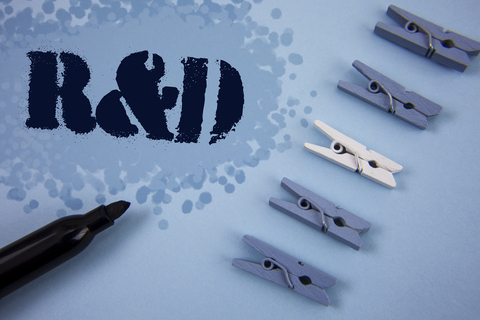Research & Development
Helping Businesses with R & D Advice
A huge number of startups and small businesses are not taking advantage of the Research and Development (R&D) tax relief program, where businesses can get tax relief on Research and Development expenditure with either a 33.35% or 24.7% cash-back for every £1 spent on approved costs.
While the HMRC have been ending many other tax relief programs, this particular initiative has been actively pushed by the HMRC in a bid to encourage small business to invest in Research and Development.

What Qualifies as R&D Spending
The spending must be for a particular project whose goal is to make an advance in technology or science, excluding social sciences and theoretical fields like pure mathematics and economics. It must also be a project affiliated to your existing registered business or a business that you plan to set up as a result of your R&D efforts.

To get the tax relief, you need to demonstrate and explain:
- How you overcame uncertainty.
- What you tried and/or tested in technology and/or science.
- How you searched for an advance in technology and/or science.
- How this advance couldn’t be easily be achieved by another person in your field.
R&D Explained
The Basics – The first step is to figure out the type of business you fall under and what guidelines apply for your category.
There are 2 main types of R&D tax relief:
SME Tax Credits (STC)
STC Scheme Explained
First, you must establish if your business qualifies as a Small or Medium sized Enterprise. This means that your business must be:
This means that your company must be a privately-owned business and not a public limited company.
Your business must employ less than 500 people because this disqualifies your company from being an SME.
To qualify for the STC scheme, your company must have a turnover of less than £100 Million.
On top of the above requirements, your enterprise must also be a UK resident trading business (this excludes sole traders or partnerships). Moreover, you will also need to include partnerships and associate companies when trying to establish if you qualify as a large company or SME. Any business that does not qualify as an SME is categorized as a large company and falls under the RDEC scheme. This scheme is not as lucrative, but it still offers many benefits when doing large research projects.
Research & Development Expenditure Credits (RDEC)
RDEC Scheme Explained
This scheme can also benefit large companies and SME’s who have been subcontracted to do Research and Development work for a large corporation. This is a tax relief which is:
This means that is visible as a valid income in your business accounts.
This tax scheme can be worth up to 14% of your qualifying R&D expenditure.
RDEC is taxable at the standard rate of (19%) which means the benefit is valued at 19p for every £1 used on Research and Development projects.
RDEC is a scheme that’s typically used by large corporations. This scheme allows large loss-making businesses to claim tax relief from HMRC. The tax relief is subject to National Insurance cap and PAYE, this is to avoid non-UK resident companies from claim tax relief. The benefits of the RDEC tax relief scheme are easy to forecast, regardless of your business’s tax position. This means that business can enjoy greater stability and large businesses can easily factor in the tax relief when making key decisions.
